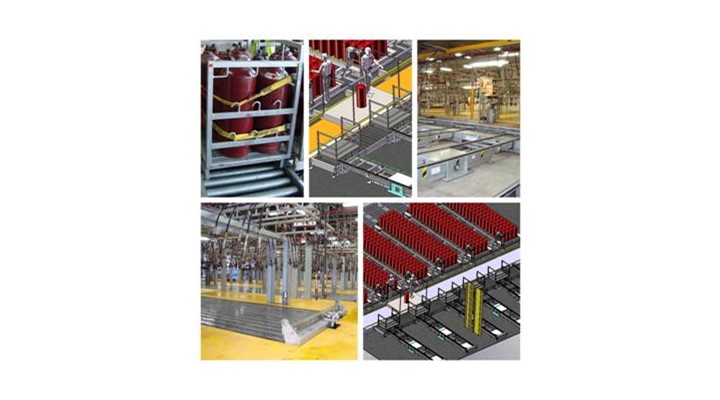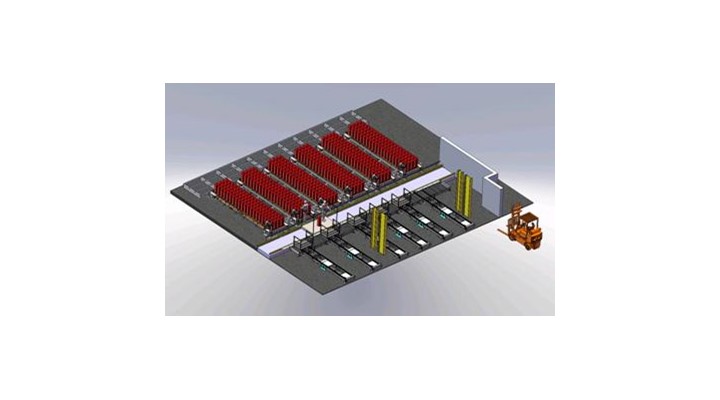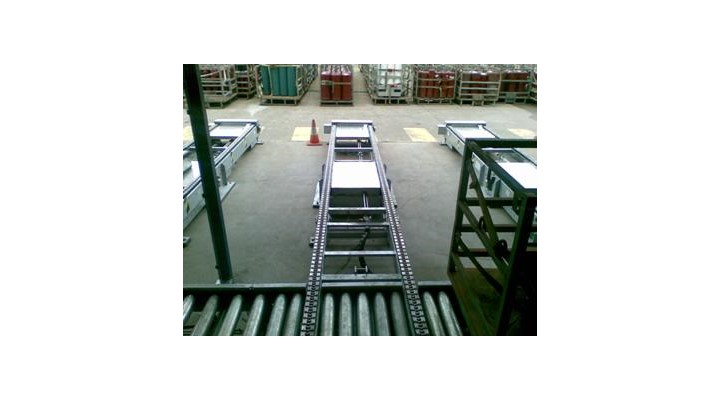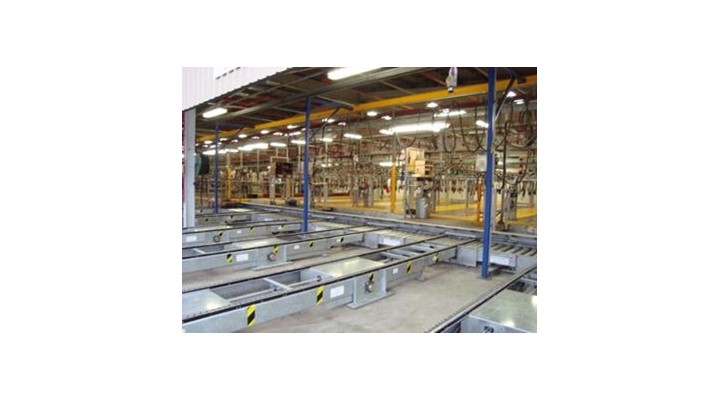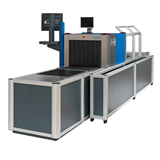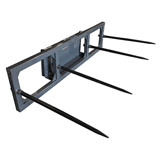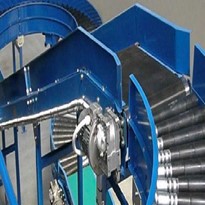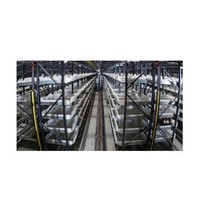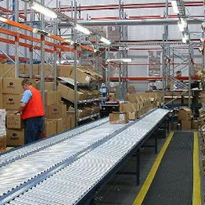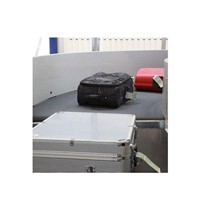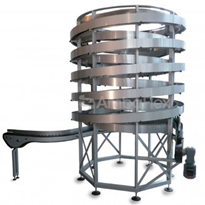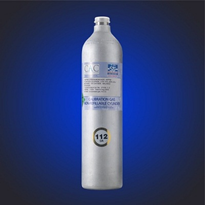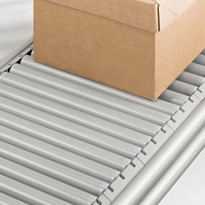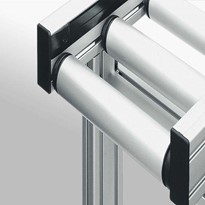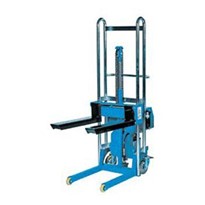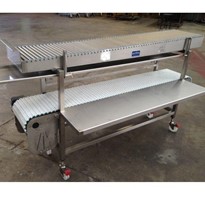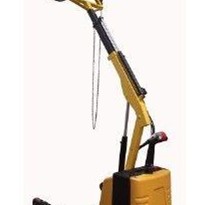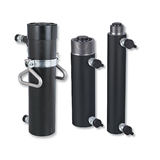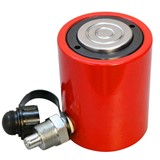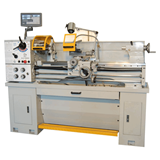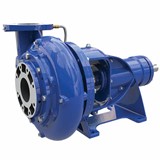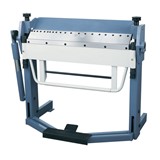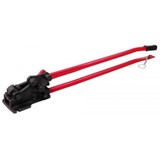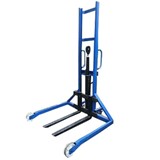The project
Acetylene gas and manual handling of cylinders provide a challenging combination.
As such, BOC approached Australis Engineering to develop a solution that could assist in increasing their capacity for filling acetylene cylinders whilst also reducing both manual and fork-lift handling.
To assist BOC in achieving these objectives, Australis provided a variety of different services.
Australias designed, manufactured and installed 6 x 6.5m chain conveyors to handle steel pallets containing acetylene bottles. These conveyors were located externally, in exposed conditions and were reversible to feed pallets in and out, and were fitted with lift up ends to allow transfer of pallets to a common roller conveyor.
They design, manufacture and installed 6 x 6.5m, reversible slat conveyors to each handle 80 acetylene cylinders. These conveyors were just 300mm above-ground with no part of the drive train above the top of the conveyor; and were required to work in a wet environment due to the water cooling of cylinders during filling.
Compliance to Zone 1 hazardous gas area was achieved by eliminating all electrical items and replacement with hydraulics.
The result
Australis delivered a turnkey solution that was able to meet BOC's requirements.
Through innovative system design, BOC were able to both increase throughput and all but eliminate manual handling of pallets and cylinders. In turn this helps in minimising potential OHS hazards.
The provision of galvanised pallet conveyors condensed the time a forklift was required by allowing several pallets to be loaded or unloaded at one time, where the operator could move pallets around with the aid of the pallet and roller conveyor which freed up the fork and driver for other jobs.
The proposed cylinder capacity placed more load on operators as they were potentially required to roll more cylinders up to 7.5m to reach the farthest filling point.
However, with the installation of the stainless steel slat conveyors, the maximum distance travelled is just 1.5m and the stainless construction improves longevity in the wet environment. This allowed the operator to handle a greater number cylinders in less time resulting in increased throughput while also educing OHS concerns.
The following actions were taken to achieve compliance with Zone 1 (Hazardous Gases): pallet and cylinder conveyors were driven by hydraulic motors from a central remote hydraulic power pack; the end lift on the pallet conveyor was also achieved using hydraulic jacks; chain and slat conveyors were supported on wear strips with low electrical surface resistance to avoid the generation of static electricity; and the conveyor shafts and bodies were earthed to ground to the BOC earth system.
Additionally BOC requested the ability to clean the water collection pits under each cylinder conveyor. To achieve this, Australis designed the chain supporting structure to be removable allowing BOC to simply break the chain/s, lay them back and unbolt and remove the chain support sections in the area required in order to access the water collection pits for cleaning.
This approach presented a significantly easier option than to move the entire conveyor clear of the pits especially after BOC installed flooring around all the cylinder conveyors.
Innovation
The Australis design team were confronted with several potential problems, including some never before encountered requiring an innovative design approach.
During the design process for the pallet conveyors, the high point load on the chain rollers from the steel pallets exceeded the manufacturer's limits.
To overcome this Australis redesigned the chain and support. Chain attachments supported on wear strips allowed the pallet weight to be transferred to a larger area and overcame this problem by taking the load off the chain rollers.
Other issues that created unique design challenges included the slat conveyor being just 300mm off the ground and needing to have a centre under-slung drive (to achieve reversing). Similarly the lift up end of the slat conveyor (at the roller conveyor end), coupled with the low height and closely spaced rollers also presented some very challenging design considerations.
Each cylinder conveyor has a capacity of 5,600kg (80 x 70 kg cylinders) this, together with a low height off the ground (300mm) meant large drives were not possible if the drives were mounted below the top of the conveyor. The fact that these conveyors must also be reversible created further design considerations.
To resolve these issues smaller shafts were used with a centre bearing support being fitted to eliminate shaft flex. Both the head and tail shafts were fitted with two hydraulic motors one at each end.
To allow the drives to be below the top of the conveyor the motors were mounted lower and jack driven to the shaft. The small jack drive required a lubricated triplex chain to avoid overloading. Special Aqua Chain was used to handle the high loads and combat corrosion.
As these conveyors were hydraulically driven it allowed Australis to overcome the reversing problem. As power was directed to one end drive set the other end drive was designed to simply freewheel.
Each of the six conveyor sets were controlled by a series of manual levers at a local panel adjacent each cylinder conveyor. Individual dump valves, which if activated dropped all hydraulic pressure from the system, are also located on these panels.
Best practice
The research and development undertaken by Australis to answer BOC's design requirements has resulted in what can be believed to be a world's first in handling acetylene pallets and cylinders, and can arguably described as representing a best-practice approach for acetylene pallet and cylinder filling facilities.


